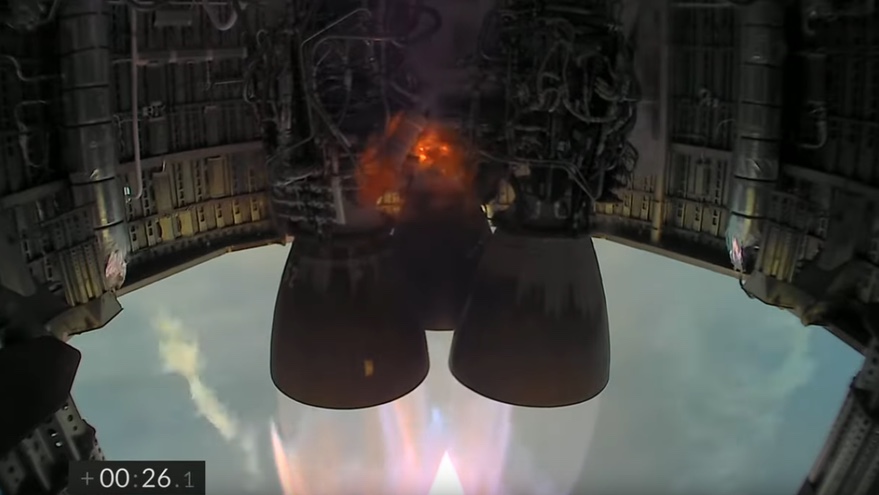Products You May Like
WASHINGTON — SpaceX Chief Executive Elon Musk said an engine on the company’s latest Starship prototype suffered a “hard start” that caused the vehicle to explode when attempting to land on a test flight last week.
The Starship SN11 vehicle lifted off in dense fog March 30 from SpaceX’s Boca Chica, Texas, test site, flying to 10 kilometers altitude before attempting a landing back at the test site. However, video from the vehicle was lost just as the vehicle’s Raptor engines were reigniting for the landing. Only later, after the fog cleared and people could return to the test site, was it clear the vehicle had exploded, scattering debris around the area.
In an April 5 tweet, Musk blamed the loss of the vehicle with problems with one of the three Raptor engines. A leak of methane, or CH4, fuel in that engine triggered a fire and “fried part of [the] avionics” on the engine, he said, “causing hard start attempting landing burn in CH4 turbopump.”
Ascent phase, transition to horizontal & control during free fall were good.
A (relatively) small CH4 leak led to fire on engine 2 & fried part of avionics, causing hard start attempting landing burn in CH4 turbopump.
This is getting fixed 6 ways to Sunday.
— Elon Musk (@elonmusk) April 5, 2021
A “hard start” is aerospace terminology for a circumstance when there is excess propellant in an engine’s combustion chamber when it is ignited. This creates a pressure spike that can damage an engine or, in a worst-case scenario, trigger an explosion.
Onboard video from Starship SN11 shown on SpaceX’s webcast of the launch does show a fire on the exterior of one of the Raptor engines starting about 25 seconds after liftoff. The fire burns for about five seconds before the webcast cuts to other camera angles, so it’s unclear long the fire lasted and if that was the incident that damaged the avionics. The fire did not appear to affect the vehicle’s performance on ascent.
[embedded content]
All four of the Starship suborbital test flights since December have ended with the loss of the vehicle. The Starship SN8 vehicle exploded upon landing in December, which Musk later blamed to a loss of pressure in a “header” propellant tank at the top of the vehicle that deprived the engines of enough propellant to land intact.
The SN9 vehicle, which launched Feb. 2, exploded upon landing as well. One of the vehicle’s Raptor engines failed to ignite for the landing, causing it to hit the ground too fast and at an angle.
The SN10 vehicle appeared to land intact on its March 3 flight, only to explode less than 10 minutes later. Musk later said that bubbles of helium, added to the header fuel tank to maintain pressure for landing after the SN8 crash, were ingested by the engines, preventing them from generating enough thrust to land safely. The vehicle landed at a high speed, causing damage that led to the explosion minutes later.
Musk tweeted that the methane leak is being fixed “six ways to Sunday” but did not elaborate. His tweets have been the primary source of public information on the status of Starship development, with SpaceX itself releasing little information. For example, after the SN11 flight the company stated on its website, “Shortly after the landing burn started, SN11 experienced a rapid unscheduled disassembly.” It offered no further details.
The next Starship vehicle in development, called SN15, incorporates what Musk said last week are “hundreds of design improvements” to its structure, avionics and engines. “Hopefully, one of those improvements covers this problem,” he said shortly after the SN11 explosion. “If not, then retrofit will add a few more days.”
